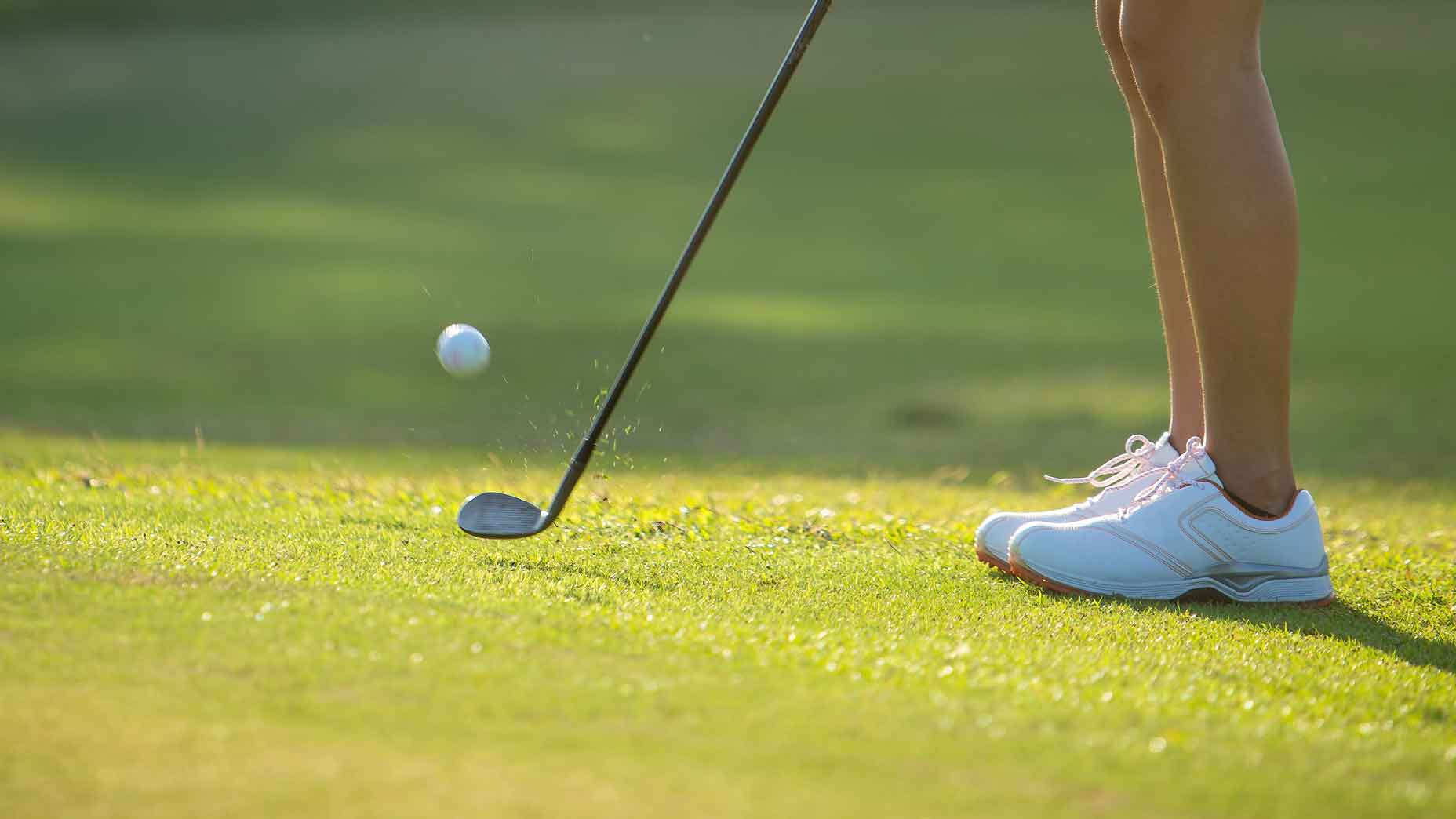 5 key tips for 2026: How to escape every bunker
5 key tips for 2026: How to escape every bunker
Top 100 Teacher Confidential: How to hit half shots when you’re in-between clubs

Pros constantly hit half-clubs. Shots that fly five yards shorter or five yards longer. Here’s how amateur golfers can learn the same skill, according to a handful of GOLF Top 100 Teachers…
Kellie Stenzel, Boca Raton Resort & Club
It is always so helpful to be able to control your club distances when you don’t land on one of your exact numbers and it can certainly make a big difference in scoring and confidence.
To hit your short iron five yards shorter, the most simple method is to choke down on the grip between 1/2 to a full inch. The makes the lever of your swing shorter and automatically delivers less power and distance.
Another choice would be to shorten the backswing slightly, but still swing through to your normal full pivot.
To hit your iron 5 yards longer, you can move your ball position slightly back in your stance but still allow the end of the grip to point to your center. This will decrease the loft angle at impact and have the ball travel farther. As you move your ball position farther back into your stance to decrease the loft you may need to slightly drop your forward foot back to realign your shoulder line to parallel to the target line.

ADVERTISEMENT
Jonathan Yarwood, International Junior Golf Academy
The dark art of precise distance control with short irons and wedges is not as mystical as you think. Adding a few yards to a shot or taking some off from these short shots it is all about trunk rotation speed. Think of your rib cage as a a motor or speed creator. Turn it faster and the ball will go further, turn it slower and the ball will go shorter.
All your arms do on these shots is ‘hang on for the ride’ as they stay in tandem with this rib rotation, contrary to the full swing where they operate at different speeds. A great drill is the good old towel under your arms drill, an oldie but a goodie here! Picture the ribs as the motor, the arms hanging on for the ride and you’ll be able to feather it or nuke it precisely and be up there with the best of them!
Jason Baile, Jupiter Hills Golf Club
I love helping players work on dialing in yardages with their scoring clubs. It is a fantastic journey into the world of “adapting to play the game”.
First find your known numbers with each club by measuring the distance of what I call a “Scoring Swing”. A scoring swing can be described as a 75% full motion swing. Once that swing is established and we know that it produces a certain number, then we can move on to testing other “tools” in order to affect trajectory and yardage. These tools would be things like gripping down a half inch to produce a shorter lower flying shot or adding speed to our 75% swing in order to add height and distance. Distance and trajectory are closely related when it comes to control, so always look into controlling distance through launch conditions.

Brady Riggs, Woodley Lakes G.C.
This is a critical aspect to scoring as it can significantly impact the proximity to the hole, increasing one putt percentage and decreasing three putts.
Adding 5 yards is fairly straightforward. The simple solution is took take loft off the club. The first step is to place the ball slightly back which moves the handle forward decreasing the loft. This also serves to create a more descending blow at impact which also strengthens the club. Finally, a more abbreviated, punch like swing can increase clubhead speed and serve to add a little more distance.
Taking 5 yards off presents more options. Any one or a combination of choking down on the club, a shorter backswing and a slower tempo can all reduce clubhead speed and take distance off. Not as popular but also effective is opening the face slightly to add loft to the club and not changing the swing. The best route is to use trial and error to find the most effective solution for each player.
To receive GOLF’s all-new newsletters, subscribe for free here.
ADVERTISEMENT





